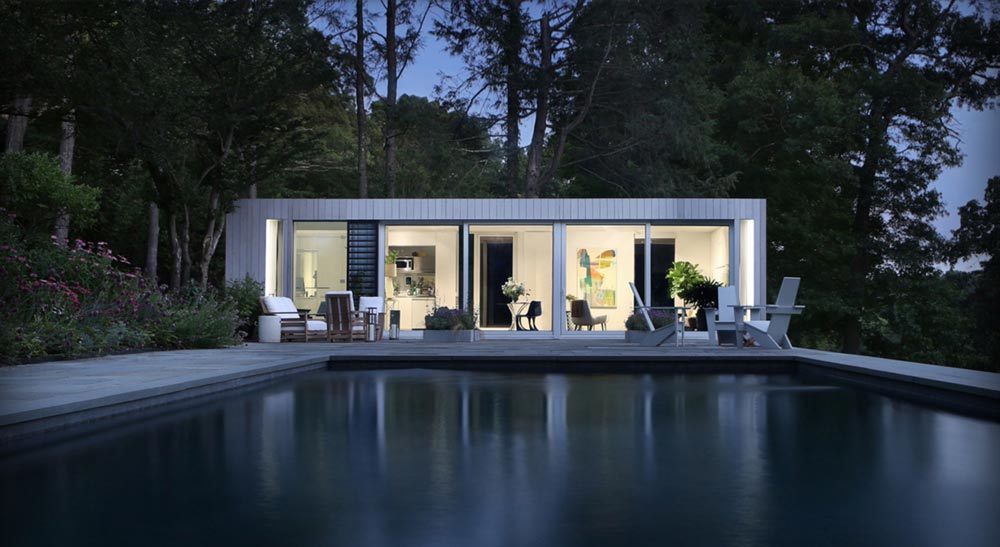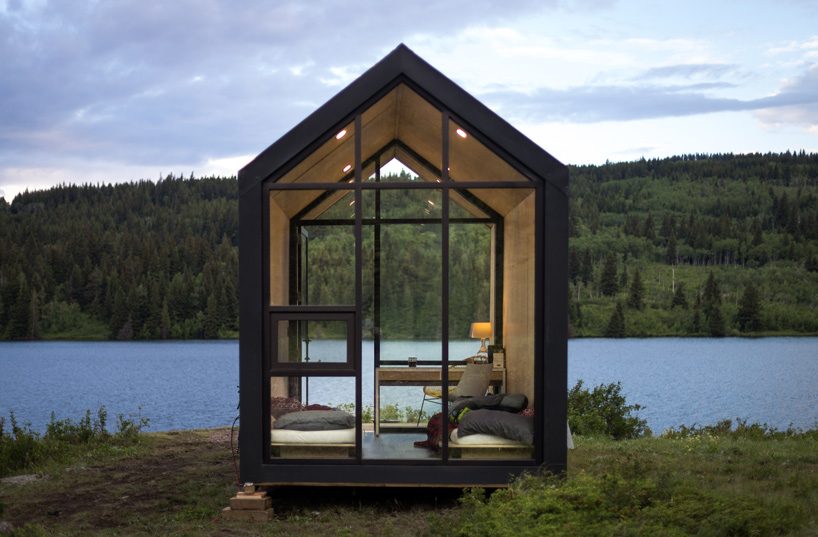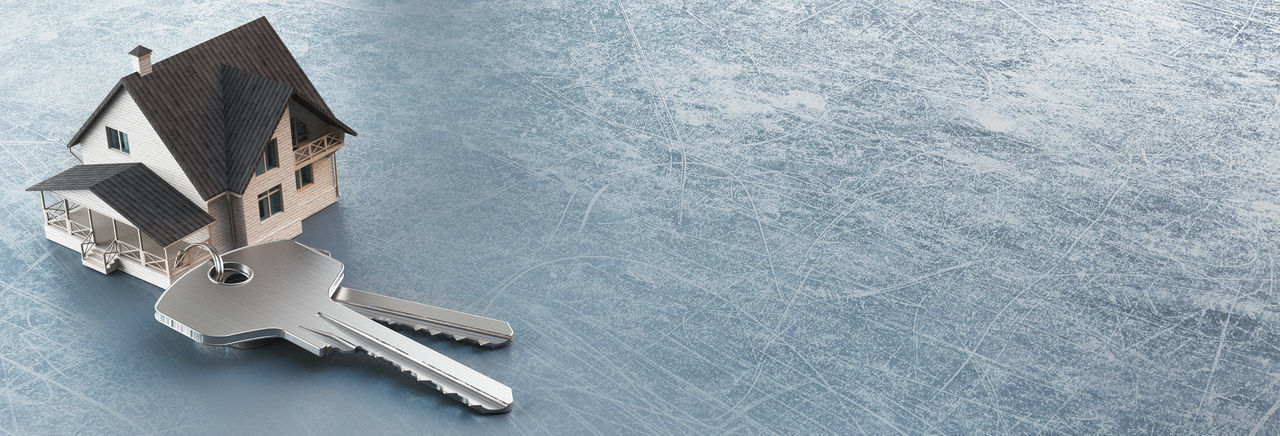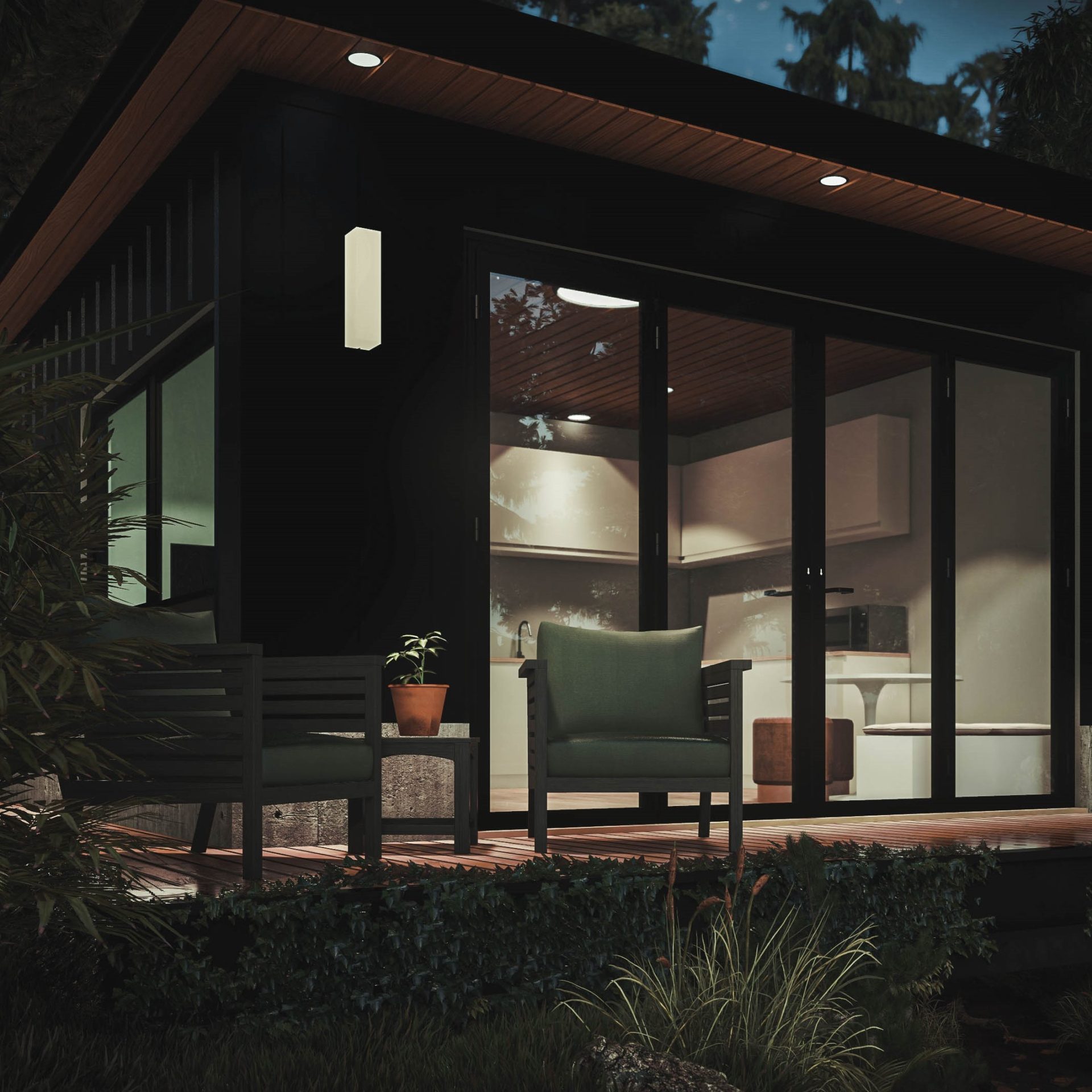
Modular Homes – What are Modular Homes?
Rohe Homes builds Modern & Modular homes.
About Rohe Homes
Our Modern Modular Homes
The Lotus is a revolutionary modular housing solution built upon the idea of simplicity. With inspiration from the great architect Mies Van Der Rohe, each modular home is created with an energy efficient and minimal design and finished with high-quality materials.
With its foldout modular design, the Lotus “blooms” on-site with little site disturbance. Each of our units can be customized and designed for many different uses. So, if you’re looking for a new home, an additional home, or simply a space to call your own – choose the Lotus.
Each home can be transported in a variety of ways including trailer, barge, or even helicopter.
Call us – 1-866-764-3466
But what are Modular homes?
What are the benefits?
What are the advantages?
Read the article below.
What are Modular homes?
Here is an article from Dwellito giving details:
1 – Modular Homes are made up of sections, called modules
Modular homes are homes that are built in sections in a factory setting and then transported to their destinations. They may also be called prefabricated or factory-built homes. The sections are constructed off-site and then assembled into the completed house before heading out or at the lot where the home will be permanently located. Once assembled and installed on its foundation, a modular home looks just like any other house.
2 – Modular Homes are not Manufactured homes
Manufactured homes are sometimes called mobile homes and they are exactly that, mobile. Modular homes are built off-site in phases and the home or the sections are brought to the site to be permanently assembled and installed on a foundation as any regular home. The modular home, once assembled, is not designed to be moved as a manufactured home is.
3 – Modular Homes are delivered fully-assembled or in sections
Modular homes can be delivered in a few different ways. In the industry, term modular home usually refers to a home that is fully pre-assembled. Based on the accessibility to the site, there are a variety of factors are in place to decide which is best for each particular situation and lot location.
Pre-assembled – Delivered in place from a truck or crane. The modular home is always built in sections in the factory. Once each section is finished, they can be assembled into the final product and delivered as a completed house. The house is transported whole to the site and placed on a foundation. Since Modular homes are pre-assembled, the size options are often limited due to the transportation constraints. Meaning, a home that is pre-made needs to adhere to the road width and height requirements for transportation.
Panelized – A system where the walls, roofing, and floor are pre-assembled and the home in constructed on site. Panelized homes are quicker to build than traditional, site-built homes, but they are not as fast as modular homes. The benefit to panelized homes comes from the way they are shipped. Some benefits to Panelized homes is that it can be cheaper to transport and there are more design options and sizes.
Flat packed – Flat packed homes are often described as a kit-of-parts, like legos, that are assembled on-site. The term flat-packed refers to the transportation method that describes the pieces flat in the truck or shipping container. Pieces assembled on site. This tends to be the easiest and safest way to transport the product. Out of the three methods, this method requires the most time on site.
4 – Modular Homes are made in Factories and often placed with a Crane
Modular homes are almost always fabricated in factories. This allows the manufacturer to build in a climate-controlled environment protected from the outside elements that can affect build time. The sections are moved to the location when completed and assembled with a crane.
5 – Modular Homes are prefabricated homes (prefab homes)
You will sometimes read or hear the word prefabricated (or prefab) home when researching or talking about modular homes. Prefab Homes is short for Prefabricated Homes, which means part of the home or all of the home was fabricated off-site and then transported to the site. Prefab and Modular Homes are not interchangeable words. In the industry, the term Modular Homes often refers to the home being fully pre-made, instead of prefab home made in sections or parts.
6 – Modular Homes are sometimes cheaper than traditionally built homes
There are many elements and reasons that can make a modular home less expensive than a traditionally built house.
- No architect fee because they are pre-designed (Architect fee is 4%-12% of construction cost) – Modular home plans are usually pre-designed and ready for the adaptations that you want to bring to it to personalize it. You can’t compare to the price of hiring an architect to custom-design a new home with all the details.
- Often lower permit fees – You still need to acquire permits for your home, but they tend to be lower when purchasing a modular home.
- Labor costs are considerably lower because there is less time building on site exposed to weather conditions that can incur delays and extra costs. The build time is considerably shorter when the home is built inside a factory.
- No General Contractor Fee – No general contractor is needed on site when purchasing a modular home. All inspections are made in the factory.
- No dumpster fees – little to no waste with pre-assembled modules.
- Signature architectural design for cheap (many architects build modular homes, not just the boring home builders) – Not all modular homes are built equal. They are not cookie-cutter homes that feel generic. Some architects sell specs for modern and personalized modular homes.


7 – But they can also be more expensive than traditionally built homes
A few things need to be taken into consideration when purchasing a modular home. The initial purchase price tag may seem low, but extras need to added to the final cost of your home. Check with your builder to make sure that you know what is included and what is not.
- Transportation to site fee
- Crane fee – to place unit on lot
- Often higher price per square foot – because they are typically smaller but still have the same guts (plumbing, electrical, site costs, which is the most expensive part)
- If you can build a home yourself, that is a cheaper route
8 – Many cities allow for Modular Homes in backyards (ADUs)
Cities across the USA vary their regulations regarding modular homes in their backyards, or accessory dwelling units (ADUs). make sure that you are in accordance with your specific area regulations. Not complying to city regulations and acquiring appropriate permits may slow down your process. Most cities in the US consider an ADU an inhabitable structure that is under 1200 square feet.
9 – Modular Homes make great income properties on Airbnb
Airbnb has grown to become a very profitable and competitive force in the hospitality industry. Many homeowners, and even renters, now rent out part of their home or offer the complete home for rent on the popular website. Modular homes make great income properties because they tend to be less expensive to own and maintain than traditional homes but can reap the same rental incomes.

10 – Modular Homes were introduced decades ago
Modular homes did not just recently appear on the market. They have been around for quite some time. They are a tried and tested method to home ownership and have proven to be homes that withstand the years and elements as any traditionally built home.
There is recent increase in interest in modular homes and ADUs. They used to be more cookie-cutter and could be minimally personalized. Now many companies are offering original and modern modular homes that have unique design features that you can personalize.
11 – You can buy a modular home and live in it 3 weeks from purchase
This is one of the greatest advantages of purchasing a modular home. There are no outside weather and climate elements to deal with so construction is steady and quick, getting you into your new home in several months instead of possibly years.
- Project variables and possible delays are reduced due to the fact that the home is built in a factory.
- Modular homes can typically be completed inside the factory within 2 weeks. Once the sections are constructed, it takes about a week to deliver the modules to the site. It generally takes the builder anywhere from 1 to 3 weeks to assemble the modular home on its permanent location. Modular home manufacturers have networks of trusted builders in almost every city that are familiar with their product.
12 – Do your research before buying a Modular Home
Researching all the aspects of purchasing a modular home is important. Many factors need to be considered so that you can make the best possible choice and that you minimize the possibility of unpleasant surprises. Shop around for different modular home companies. You will notice that prices, services, and quality differ.
These are a few things to research when setting out to purchase a modular home.
- Lot setbacks (eg 3’ x 7’ x 15’)
- Deliver on site constraints
- Value of rental (airbnb listing prices / rental prices in the areas)
- Value of unit (comps in neighborhood, other houses have them)

13 – Some banks will finance Modular Homes in a regular mortgage structure
Home ownership usually entails a mortgage with a bank or lending company. A traditionally built home and a modular home are no different when it comes to financing. Depending on the total amount of the loan, the interest rate, and the number of years, your lending institution will offer several options including HELOC, Construction loan, and some new models offer co-investing.
14 – Most modular Home Manufacturers will ship anywhere in Canada
You don’t have to stick to your regional modular home builders. Shop online and you will see that there are a lot of modular home companies that ship nationally. Of course, this will raise the cost of the transport, but sometimes it is worth it to get the perfect modular home that suits your needs. Look for homes with the label “flat packed” or “kit of parts” to find homes that are shipped in conventional transportation methods.
15 – You can try out many Modular Homes before buying
How about giving a modular home a spin? Search for listings on Airbnb where you can get the full immersive experience of staying in a modular home. Most modular home companies will have a showroom with actual houses that you can visit.
16 – The price is the actual price when ordering a modular home
When you purchase a modular home, you know upfront what the cost will be. This is one of the biggest reasons to buy a modular home. If you have ever done a construction project or hired a General Contractor, you know the struggle: 3x over budget, 3x over deadline.
Most prefab home manufacturers and suppliers have different pricing models. Make sure to go over the details with the company. Some may include appliances, heating and AC in the cost and others may not. Site costs are not often included but can vary. For companies that include it all, they often will have “turn-key” as a term for prices include everything.
17 – But, make sure to check additional costs
When you purchase a modular home, you get a fixed price from the company. This is by far not your final price. The modular home needs to be moved and assembled and infrastructure needs to be prepared on your lot. You may have to purchase appliances and heating/cooling systems. Make sure you know what you are getting and what you need to purchase as extra.
18 – Modular Homes appreciate in value more than manufactured homes
Since manufactured homes are mobile and are more prone to wear and tear from moving them around, they tend to depreciate more in value then the modular homes that are permanent. Modular homes also tend to look more like regularly built homes and therefore appreciate in value in the same way.
19 – Modular Homes often have greater longevity and energy savings
Modular homes are usually constructed with energy saving in mind. They tend to be made with quality materials that withstand the test of time and hold up to a variety of environmental situations. They are made on a steel frame instead of wood that decreases the chances of rotting and termite problems.
20 – Modular Homes are not cookie cutter
Modular home companies have a variety of floorplans that they sell that clients can customize to a certain level. They certainly have come a long way and are definitely not cookie cutter. Details like finishes can be personalized to transform the home more to your image.
21 – Many Modular Homes come with building warranties
Purchasing a modular home from a trusted company ensures a building warranty like any other home purchase. Mechanical, electrical, plumbing, water-proofing, and structural components will all be under warranty. Make sure to revise this detail with your modular home provider.
About Rohe Homes –
Our Modern Modular Homes –
The Lotus is a revolutionary modular housing solution built upon the idea of simplicity. With inspiration from the great architect Mies Van Der Rohe, each modular home is created with an energy efficient and minimal design and finished with high-quality materials.
With its foldout modular design, the Lotus “blooms” on-site with little site disturbance. Each of our units can be customized and designed for many different uses. So, if you’re looking for a new home, an additional home, or simply a space to call your own – choose the Lotus.
Each home can be transported in a variety of ways including trailer, barge, or even helicopter.
Rohe Homes – Contact us




